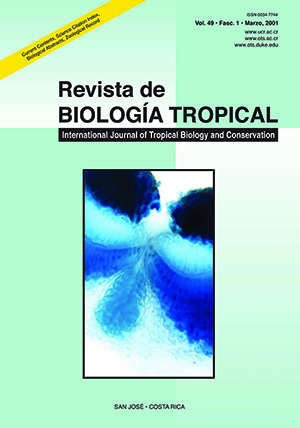Abstract
We studied how waterbirds used two small estuaries during the non-breeding season of 1995-1996. These estuaries, El Chorro and Majahuas, were located in the middle of a large span of non-wetland habitat along the Pacific coast of México. Whereas El Chorro was basically a large and open waterbody, Majahuas was a long and narrow corridor flanked by mangroves. The two estuaries had 77 species throughout our study, but shared only 58, due to differences in their habitat. Seabirds comprised 66% of all the birds; grebes, ducks and rails 16%; shorebirds 12% and herons and egrets 5%. During late winter and early spring a very reduced number of migratory species accounted for the dominance of seabirds. Sterna hirundo and Phalacrocorax brasilianus accounted for 40 and 33%, respectively, of all the seabirds. Opening or closure of the estuary mouth at El Chorro affected the bird communities at both sites, by exposing or inundating a large mudflat in that estuary. Overall, however, time of the year was more important in the composition of the bird assemblages. Both estuaries should be considered as a single unit.Comments

This work is licensed under a Creative Commons Attribution 4.0 International License.
Copyright (c) 2001 Revista de Biología Tropical
Downloads
Download data is not yet available.


